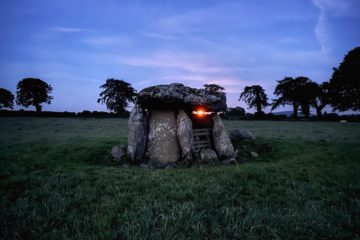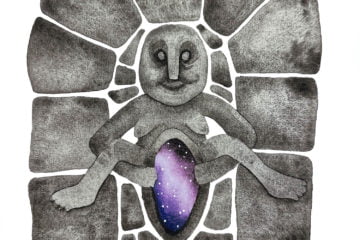
Not too long ago I had the pleasure of visiting the breathtaking Drombeg Stone Circle on a quiet and grey morning, just early enough to beat the steady flow of visitors that pass through it on a daily basis.
It was my first time visiting, and I wasn’t too sure what to expect, as I have found sometimes with the ‘popular’ sites it can be hard to drown out the noise and immerse myself in the atmosphere. However, this was not the case at Drombeg. This truly is an enchanting site with beautiful views, the remains of two huts and a fulacht fiadh (ancient cooking place) lying alongside it, and of course the mysterious recumbent axial or ‘altar’ stone – a unique feature of many of the circles found in the Cork-Kerry area.
Aligned with the Winter Solstice
Drombeg is believed to have been active from the Bronze Age into the early Iron Age (c 1100 – 800 BC), and features two taller portal stones at the entrance that sit opposite the axial (‘alter’) stone. The portal and axial stones are aligned with the setting sun of the winter solstice. Interestingly, there are two deep cup marks carved into the surface of the axial stone, and though we don’t know what their use was, I found that my imagination ran wild as I stood in front of it.
Excavations
The site was excavated in 1957, and the fascinating discoveries of an inverted pot containing the cremated remains of a young teenager wrapped up in a cloth were uncovered at the centre of the circle, under the remnants of a gravel floor. I have thought often of this young person since my visit, wondering what happened and why they were laid to rest in such a special manner.
I also found the remains of the huts and the fulacht fiadh that are located beside the circle so fascinating. There is evidence that fulacht fiadh was in use into the 5th century, but we can’t know for certain if it’s use was related to the circle. Though it seems like it would be a bit of a coincidence if it was not. Perhaps ancient gatherings were held there with communal feasts to celebrate a religious ritual, or perhaps not. Without further evidence we cannot know, but it makes very interesting food for thought!
Shelly


